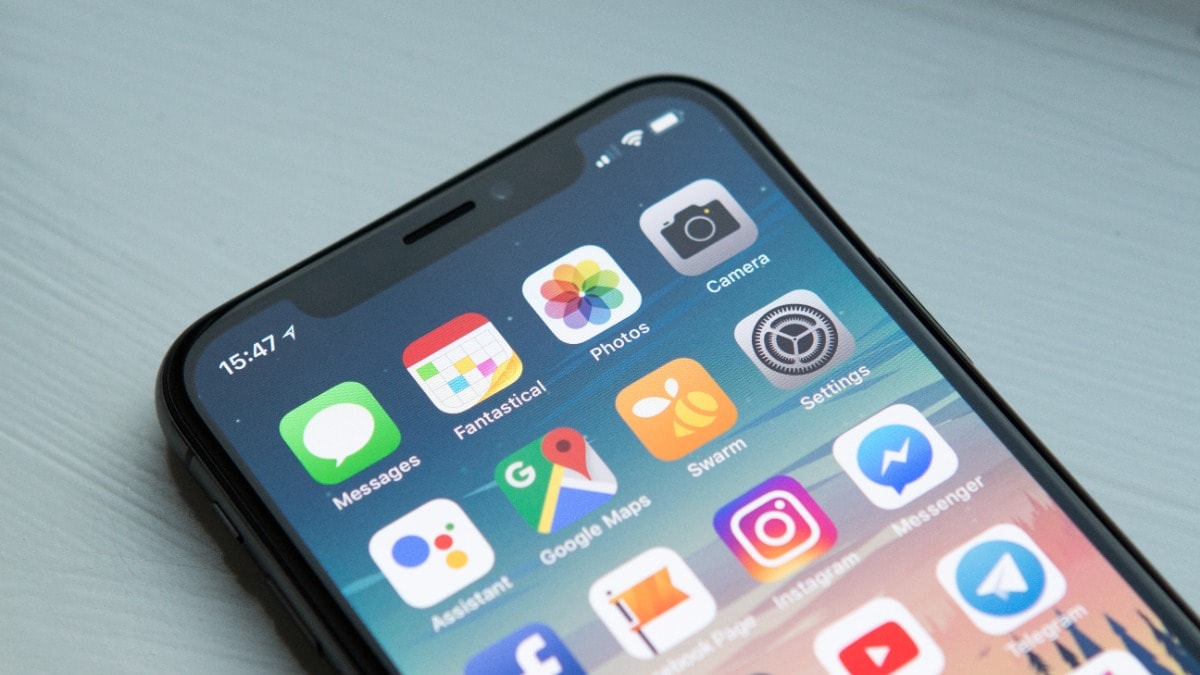Gadgets And Technology Daily News | 04 Jun 2023

Views (116)

YouTube to Stop Removing Content Spreading Misinformation on Past Elections as Part of New Policy

Alphabet's YouTube said on Friday that the platform would stop removing content that might have spread false claims related to US presidential elections in 2020 and before. The new set of updates is part of YouTube's elections misinformation policy that will go into effect immediately.
"In the current environment, we find that while removing this content does curb some misinformation, it could also have the unintended effect of curtailing political speech," YouTube said in a blog post. The platform also said the rest of its policies against hate speech, harassment, and incitement to violence would continue to apply to all user content, including elections. The proliferation of disinformation has raised questions about how social media platforms enforce their policies against misleading content about elections.
Other social media platforms like Twitter and Meta Platform's Facebook have also seen a spike in disinformation related to elections.
In March, YouTube lifted restrictions on former US President Donald Trump's channel, following more than two-year suspension after the deadly Capitol Hill riot on January 6, 2021.
"We carefully evaluated the continued risk of real-world violence, while balancing the chance for voters to hear equally from major national candidates in the run up to an election," YouTube said in a tweet, referring to the move.
The video-streaming platform banned Trump in 2021 for violating its policy of inciting violence after his supporters stormed the US Capitol when Congress began to certify Joe Biden's victory in the presidential election.
In the same month, the US Federal Trade Commission (FTC) issued orders to eight social media and video streaming firms including Meta Platforms, Twitter, TikTok, and YouTube seeking information on how the platforms screen for misleading advertisements.
© Thomson Reuters 2023
Twitter's Head of Brand Safety and Ad Quality to Leave Company: Details

Twitter's head of brand safety and ad quality, A.J. Brown, has decided to leave the company, according to a source familiar with the matter on Friday, the second safety leader to depart in a matter of days.
The latest departure adds to a growing challenge for new Twitter CEO Linda Yaccarino, even before she steps into the role.
On Thursday, Ella Irwin told Reuters that she resigned from her role as vice president of product for trust and safety at the social media company, where she oversaw content moderation efforts and often responded to users with questions about suspended accounts.
Brown worked on efforts to prevent ads from appearing next to unsuitable content.
Platformer and the Wall Street Journal earlier reported Brown's departure.
Since Tesla CEO Elon Musk acquired Twitter in October, the platform has struggled to retain advertisers, who were wary about the placement of their ads after the company laid off thousands of employees.
Musk's hiring of Yaccarino, former ad chief at Comcast's NBCUniversal, signaled that ad sales remained a priority for Twitter even as it works to grow subscription revenue.
Twitter and Brown did not immediately respond to Reuters' requests for comment.
© Thomson Reuters 2023
TRAI Directs Telecom Providers to Set Up Digital Platform for Customer Consent to Curb Promotional Calls, Messages

In order to curb the menace of pesky calls and sms, telecom regulator TRAI has directed service providers to develop a unified digital platform in two months to seek, maintain and revoke customers' consent for promotional calls and messages.
In the first phase, only subscribers will be able to initiate the process to register their consent for receiving promotional calls and sms, and later, business entities will be able to reach out to customers to seek their consent to receive promotional messages, Telecom Regulatory Authority of India (TRAI) said in a statement on Saturday.
"TRAI has now issued a direction to all the access providers to develop and deploy the Digital Consent Acquisition (DCA) facility for creating a unified platform and process to register customers' consent digitally across all service providers and principal entities," TRAI said.
At present, there is no unified system to show the consent of customers for getting promotional messages.
"Considering the volume of work involved, TRAI has allocated two months time to develop such facilities by all Access Providers and thereafter implement it in a phased manner. This direction has been issued by TRAI under its Telecom Commercial Communication Customer Preference Regulations, 2018," TRAI said.
Under the prevalent system, consent is obtained and maintained by various principal entities such as banks, other financial institutions, insurance companies, trading companies, business entities, real estate companies, etc.
The absence of a unified digital platform makes it impossible for telecom operators to check the veracity of consent.
"The DCA process shall have the facility to seek, maintain and revoke the consent of customers, as per the processes envisaged under TCCCP Regulation 2018. The consent data collected will be shared on the Digital Ledger Platform (DLT) for scrubbing by all access providers," TRAI said.
Access providers, which include telecom players like Reliance Jio, Bharti Airtel, and Vodafone Idea, have been further directed to use a common short code starting with 127 for sending consent-seeking messages.
"The purpose, the scope of the consent, and the principal entity or brand name shall be mentioned clearly in the consent-seeking message sent through the short code," the statement said.
Only whitelisted or approved web or app links, callback numbers, etc will be allowed to be used in the consent-seeking messages, it said.
"Further, access providers shall develop an SMS, IVR (interactive voice response), online facility to register unwillingness of the customers to receive any consent-seeking messages initiated by any principal entity," the statement added.
Hackers Exploit Security Flaw in Popular File Transfer Tool MOVEit to Steal User Data

Hackers have stolen data from the systems of a number of users of the popular file transfer tool MOVEit Transfer, US security researchers said on Thursday, one day after the maker of the software disclosed that a security flaw had been discovered.
Software maker Progress Software Corp, after disclosing the vulnerability on Wednesday, said it could lead to potential unauthorized access into users' systems.
The managed file transfer software made by the Burlington, Massachusetts-based company allows organizations to transfer files and data between business partners and customers.
It was not immediately clear which or how many organizations use the software or were impacted by potential breaches. Chief Information Officer Ian Pitt declined to share those details but said Progress Software had made fixes available since it discovered the vulnerability late on May 28.
The software's eponymous cloud-based service had also been impacted by this, he told Reuters.
"As of now we see no exploit of the cloud platform," he said.
Cybersecurity firm Rapid7 and Mandiant Consulting - owned by Alphabet's Google - said they had found a number of cases in which the flaw had been exploited to steal data.
"Mass exploitation and broad data theft have occurred over the past few days," Charles Carmakal, chief technology officer of Mandiant Consulting, said in a statement.
Such "zero-day," or previously unknown, vulnerabilities in managed file transfer solutions have led to data theft, leaks, extortion, and victim-shaming in the past, Mandiant said.
"Although Mandiant does not yet know the motivation of the threat actor, organizations should prepare for potential extortion and publication of the stolen data," Carmakal said.
Rapid7 said it had noticed an uptick in cases of compromise linked to the flaw since it was disclosed.
Progress Software has outlined steps users at risk can take to mitigate the impact of the security vulnerability.
Pitt did not have a comment on who might have been trying to steal data by exploiting the flaw.
"We have no evidence of it being used to spread malware," he said.
MOVEit Transfer was used by a relatively "small" number of customers compared to those of the company's other software products that number more than 20, he said.
"We have forensics partners on board and we are working with them to make sure that we have an ever-evolving grasp of the situation."
© Thomson Reuters 2023
Samsung Confirms Camera Blur Issue on Galaxy S23 and Galaxy S23+, Says a Fix Is on the Way

Samsung launched the Galaxy S23 series earlier this year in February. While the flagship phones come with an enhanced camera experience, several Galaxy S23 and Galaxy S23+ users have reported a camera blur issue in close-up shots. Now, Samsung, too, has confirmed the issue on its community page for Europe. The company said that a fix to this problem via a software update is on the way. The South Korean firm has also explained the reason behind the issue as well as the workaround to prevent the blurring.
Samsung via its community page has confirmed that the area around the subject looks a bit blurry in close-up shots taken from the Galaxy S23 and Galaxy S23+. The company also explained that the rear wide-angle camera on the S23 and S23+ has a bright aperture, which makes the background of the photos look a bit blurry. Samsung has said that the issue will be fixed via a software update.
Meanwhile, Samsung has also shared some workaround ways to fix the camera blur issue on the Galaxy S23 and Galaxy S23+. Samsung has recommended users take a picture from a slightly greater distance or hold the phone vertically while taking pictures. It has added that holding the phone horizontally or obliquely can make the background appear blurry.
Samsung launched the Galaxy S23, Galaxy S23+, and Galaxy S23 Ultra earlier this year in February. The Galaxy S23 and Galaxy S23+ share many similarities, including a 6.6-inch full-HD+ Dynamic AMOLED 2X display with a refresh rate spanning from 48Hz to 120Hz and a touch sampling rate of 240Hz in game mode. Both phones are powered by a modified version of Qualcomm's latest chipset i.e., Snapdragon 8 Gen 2 Mobile Platform for Galaxy.
For optics, the phones ship with a triple rear camera setup comprising a 50-megapixel primary wide-angle sensor, a 12-megapixel ultra-wide lens, and a 10-megapixel telephoto camera with 3x optical zoom. The phones also have a 12-megapixel selfie camera.
Kaspersky Finds Cybersecurity Threat That Targets iPhone Users via Malicious iMessage Attachment

Prominent cybersecurity and anti-virus firm Kaspersky has discovered a new cyberattack threat that targets iPhone models running older versions of iOS via iMessage application. The malware, found when the company was monitoring its own Wi-Fi network for mobile devices, infects the phone via a received iMessage, which contains a malicious attachment. The threat doesn't require the iPhone user to do anything and utilises iOS vulnerability to install a spyware that takes complete control of device and user data.
According to a report about their findings published by Kaspersky, the malicious attachment sent via iMessage executes a code without the need for any action from the user. The malicious code then runs a set of commands for collection of private user data.
Kaspersky CEO Eugene Kaspersky tweeted about the iOS cyberattack, detailing that the spyware extracts private information like microphone recordings, photos from instant messengers, geolocation, and other data and transmits it to remote servers. The firm has dubbed the cyberattack threat as “Operation Triangulation.”
We've discovered a new cyberattack against iOS called Triangulation.The attack starts with iMessage with a malicious attachment, which, using a number of vulnerabilities in iOS installs spyware. No user action is required.#IOSTriangulation pic.twitter.com/daxEYZwXwD
Kaspersky said that the malware was found on the iPhones of dozens of employees and could target other iPhone users as well. He also added that the threat had been neutralised and details of the vulnerability have been sent to Apple. The CEO also noted that disabling the iMessage service would prevent vulnerable iOS devices from the attack.
The company said that after the malware is successfully installed on the device, the initial text and the accompanying exploit in the iMessage attachment are deleted. Kaspersky's report said the attack was ongoing, and iOS 15.7 was the most recent version among the devices that were successfully targeted. iPhone models running iOS 16 appear to be safe from the threat, but Kaspersky did mention in the comments section of its report that they could not guarantee that other iOS versions were safe.
On Friday, Kaspersky also released tools for users to check if their device was infected.
Back in February, Apple released updates that fixed major vulnerabilities with iOS 16.3 and macOS 13.2 for supported iPhone, iPad and Mac models. At the time, Apple credited the researchers who found the flaws that allowed a remote user to bypass protections put in place by Apple and gain access to a user's personal data as well as their camera, microphone, and call history.
0 Likes
